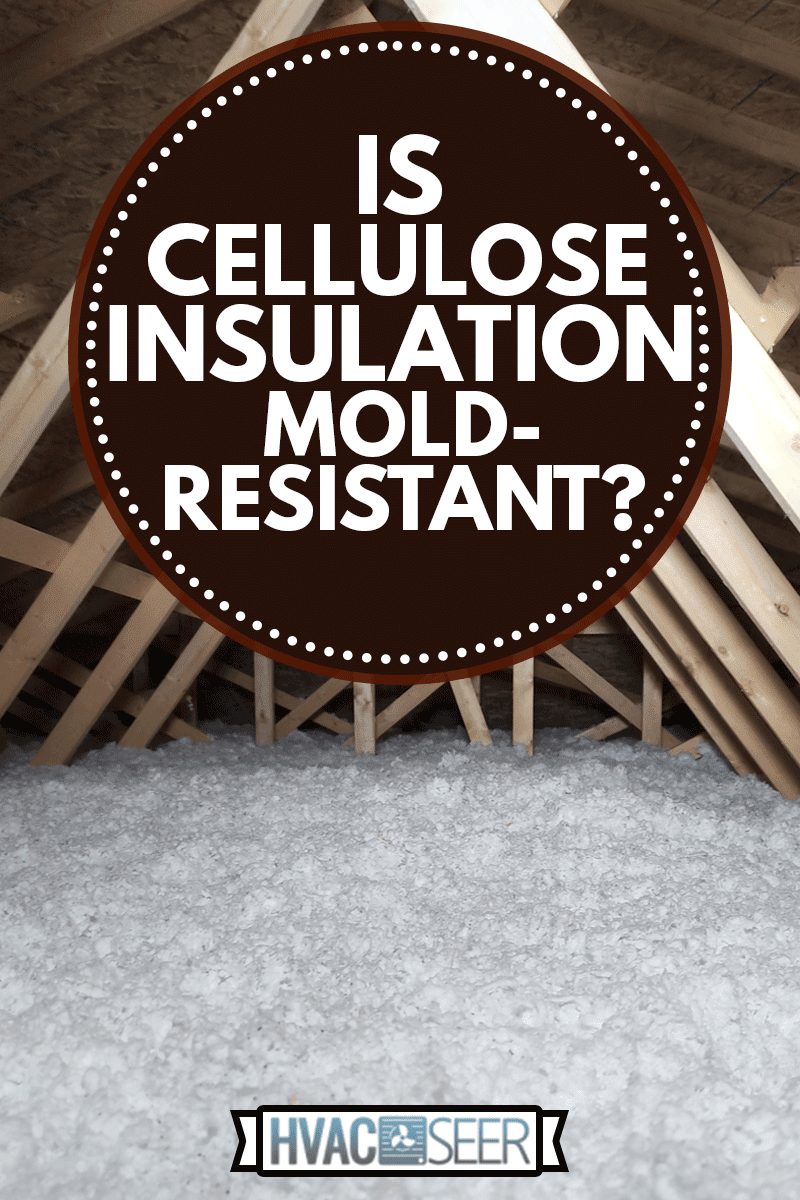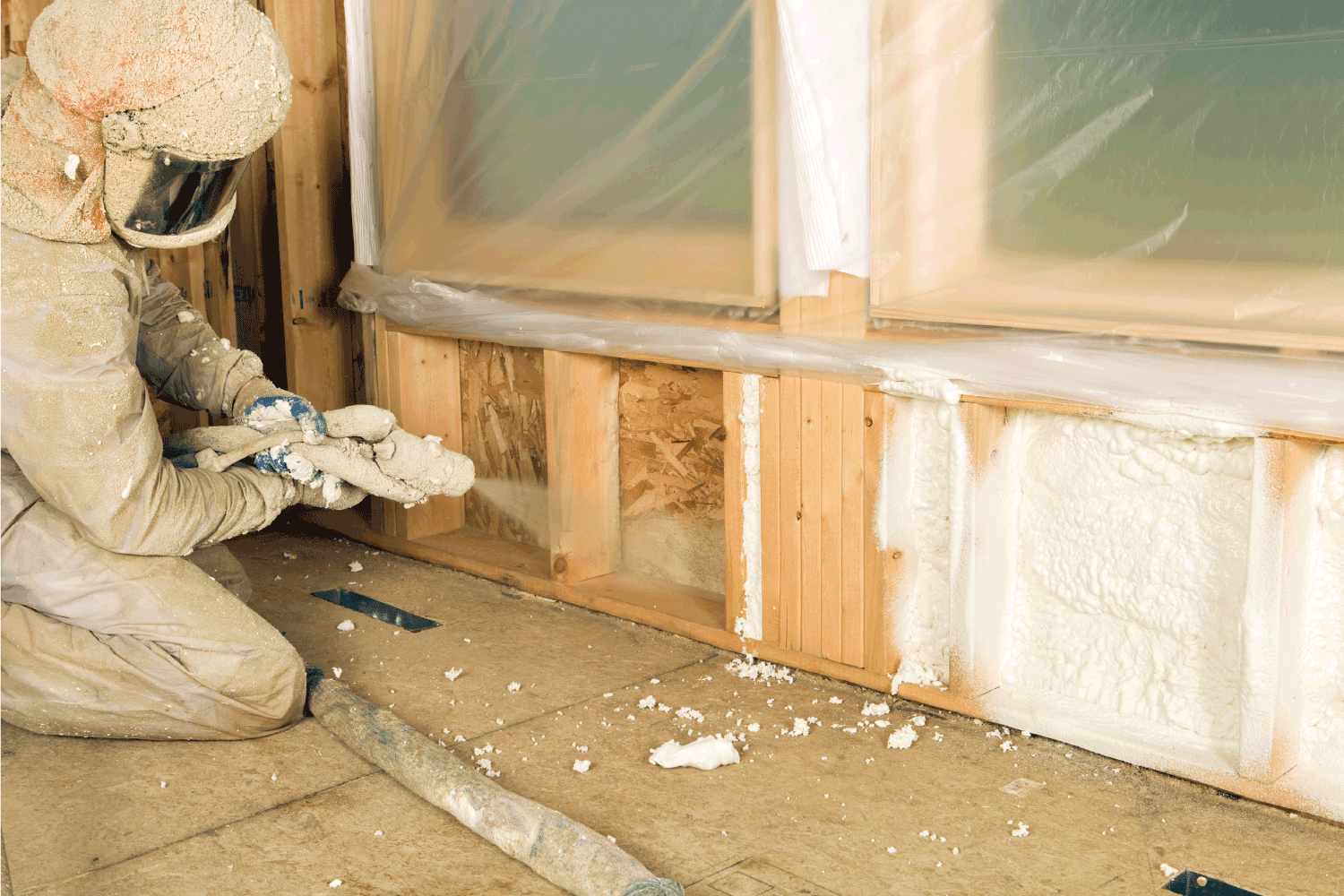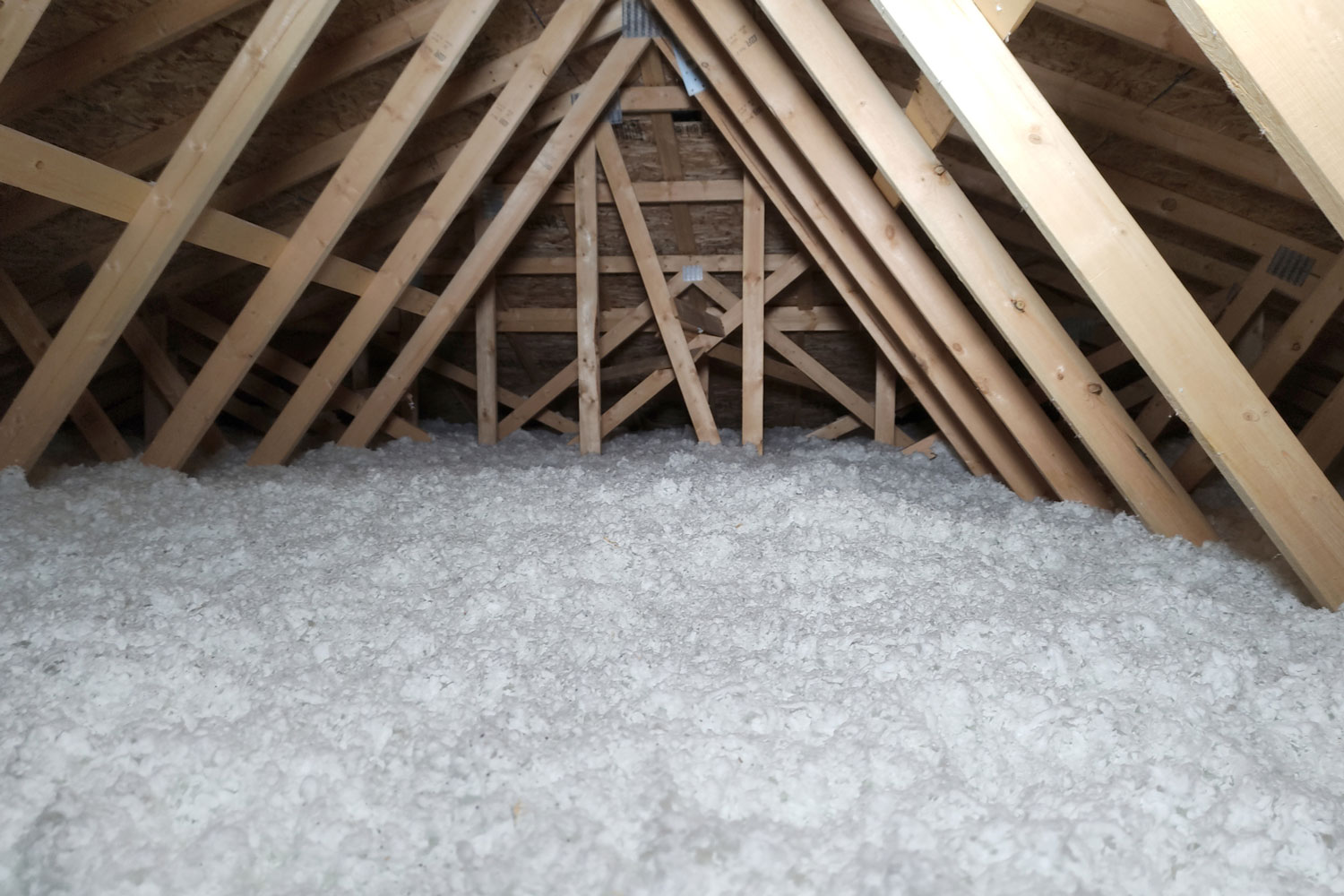Cellulose insulation is the most common insulation used in attics, crawl spaces, and interior wall cavities. But can this insulation grow mold? And if so, what do you do if it does? We have looked into these inquiries, and in this post, we will discuss the answers we've found.
Yes, in some cases, cellulose insulation can grow mold. Most cellulose insulation is sprayed with chemicals to prevent mold growth. However, in wet or very humid environments, the insulation can provide the perfect setting for mold to grow—particularly if the insulation's environment is not warm enough for it to dry. If this occurs, it's best to remove the insulation and replace it as soon as possible.
Many negative effects can result from insulation that has grown mold. One of the biggest ones is the health risk that mold poses on the dwellers of the home. Continue reading to learn how to determine if your insulation has grown mold and how to get rid of it.

Issues with Mold and Insulation
Though cellulose and fiberglass insulation are sprayed with mold-resistant chemical solutions, it doesn't make them impervious to most completely. The most common chemical used to prevent mold growth is boric acid. However, if the insulation is left to sit in a wet or excessively humid environment, the boric acid can leach out, making it more susceptible to mold infestation.
Unfortunately, you can't remove the mold from the insulation itself; it will simply have to be replaced. This is why it's extremely important to tend to any plumbing or water heater leaks and to dry out your basement, attic, or crawl space immediately. Remember, water damage can be the most costly type of damage to a home's interior and exterior.
What happens if cellulose insulation gets wet?

It's best to remove cellulose insulation as soon as possible if it gets wet. However, in some cases, you may be able to dry out the insulation with a dehumidifier or by raising the temperature in the attic or crawlspace.
If you attempt to do so, be sure to check the insulation over the next few days and weeks for mold. If there is a mold infestation, be sure to remove the insulation. Here's how to do it:
1. Gather your equipment
Start by gathering and organizing all the equipment needed to remove your cellulose insulation. This includes a respirator mask, gloves, goggles, long pants and sleeves, and a HEPA vacuum or wet/dry vac. You also need tarps and a pack or two of garbage bags to dispose of the insulation.
2. Set up your workspace
Before removing insulation, be sure that all doors and exterior openings leading to the workspace are closed off. The last thing you want is for the contaminated insulation to travel to other areas of your home. If the insulation is installed in your attic, you'll also want to create a safe walking space.
This means placing down wooden planks across any open floor joists to ensure that you don't accidentally fall through them during the project. Next, attach the tarp to any interior or exterior wall and floor areas you don't want to be contaminated by the insulation.
3. Vacuum the insulation
Before vacuuming the insulation, be sure to don all your safety equipment, especially a respirator mask. Next, take your wet/dry vac and one garbage bag and start in the corner of the room closest to the door, vacuuming the insulation and placing it in the garbage bag once the vacuum fills up. Work your way around the entire room going from one side to the other.
When vacuuming the insulation, be sure to start slowly. Note that the cellulose material will be relatively dense, and you don't want to accidentally clog the vacuum's hose (this can be a nuisance to unclog). If you notice the suction dying off with the hose, the chances are that there is a clog.
You'll need to remove the blockage before continuing. Be sure to tie up each bag after filling it up to avoid spills and further contamination.
Find this shop vacuum on Amazon.
How long does it take for mold to grow in wet insulation?

If the insulation remains wet, mold can develop within 24 to 48 hours.
Does cellulose insulation hold moisture?
Yes. If exposed to water leaks or excessive humidity, cellulose insulation can hold and absorb moisture rather easily, especially under the right conditions. This is why it's best to dry out wet cellulose insulation as quickly as possible.
It's also worth noting that cellulose insulation won't dry out as quickly as fiberglass batts and rolls, so you may need to use a combination of methods, including installing a dehumidifier and raising the temperature in the space.
Read more details about this dehumidifier on Amazon.
How do I know if my insulation has mold?
Many times, you will be able to see mold infestation on the surface of the insulation. However, sometimes the mold will accumulate in the middle of the insulation or other hard-to-spot areas. Here are a few tips for identifying mold in your insulation:
Look for areas of discoloration
If you notice any discolored orange, white, brown, or yellow areas on your insulation, the chances are that it is mold. The color of mold will vary by insulation type. However, black spots are almost always a sign of mold infestation.
Check for different patterns and shapes
If your home has experienced significant water damage, you may notice that the insulation, whether cellulose foam or rolls, appears to be lower than it previously was. If the insulation looks flat, lift it up with your hands and cut it open if necessary to check for mold. If you notice any white, green or black spots, the chances are that there may be a mold presence.
Check for foul odors
A foul new odor in your attic, crawl space, or wall cavity typically signifies a mold infestation or the presence of dead pests such as rodents or birds. If you notice any new unpleasant odors in these areas, do a visual check for mold. If the musty scent grows stronger as you get closer to the infestation, there may be a mold issue.
Note household members that are having recent health issues
The sudden onset of respiratory or other related health issues may be a sign that there is a mold infestation in your home, particularly in your insulation. Though it can be a bit difficult to discern this, allergic reactions may be a clear sign of a mold infestation.
Be sure to keep a lookout for any household members who have asthma that has worsened recently. Other symptoms include suddenly having a sore throat, experiencing watery or itchy eyes, or prolonged coughing.
Does insulation that gets wet need to be replaced?
It depends. In cases of a small or minor water leak, the insulation may be able to dry out before mold develops, especially if it is fiberglass insulation. However, if it is cellulose insulation, you may want to keep an eye out for mold.
Try to dry it out as soon as possible. If the insulation becomes saturated with water, it may need to be replaced entirely to restore the R-value needed for your home and prevent mold accumulation within the insulation.
Remember that cellulose insulation can absorb a considerable amount of water, and it will also degrade any wooden structures that it surrounds. If left too long, you may find that you not only need to replace the insulation itself but some of the wood joists and beams in your attic, wall cavities, or basement.
What insulation is mold resistant?
Fiberglass, cellulose, and spray foam insulation are all made to be mold resistant. However, it does not mean that they are mold-proof. It just means that the onset of mold spores may be delayed.
Wrapping Things Up

The best way to prevent mold from forming on your cellulose insulation is to keep the surrounding area dry. However, in some scenarios, such as when there is a leak or pipe burst, this may not be possible. In these cases, the best thing to do is to dry out the insulation to the best of your ability and remove any insulation that is completely saturated.
Before you go, be sure to check out some of our other posts:



